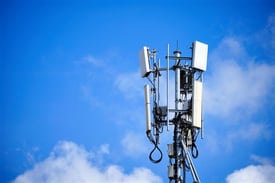Ensuring Your Office Has the Right Infrastructure
As mobile signal reception becomes more and more patchy in London, office workers are finding themselves struggling to stay connected. With so many tall buildings and new construction materials, it's becoming increasingly difficult for cellular signals to penetrate inside. That's why an increasing number of businesses are turning to Distributed Antenna Systems (DAS) or small cells to bring the mobile network signal closer to end users.If you're planning on moving your business to a new office in London, it's crucial that you select a location that has DAS and/or small cells installed, or at least has the option to have them installed. This will ensure that your employees can stay connected and productive, without having to worry about dropped calls or poor reception. Not only that but installing DAS and small cells can also improve your building's resale value.
So, if you're on the hunt for a new office in London, be sure to keep DAS and small cells top of mind. It could make all the difference when it comes to ensuring that your business can stay connected.
What is DAS?
A distributed antenna system (DAS) is a way to improve cellular coverage in buildings or other large, isolated areas. By installing a network of smaller antennas throughout the building, DAS can effectively extend the reach of a cellular signal and provide better coverage in areas that would otherwise have spotty or no service.
One of the benefits of working with a London-based team is the expertise and familiarity with the area. Align knows the best vendors to work with to get the job done quickly and efficiently. These vendors will also have the permits and permissions necessary to install the system without any issues.
Distributed antenna systems are transparent to mobile devices, allowing them to access voice and data services in the same way as any cell tower on a cellular network. DAS installations may be used in densely populated indoor settings such as shopping malls, clinics, and high-rise buildings.
The distance between antennas is such that each antenna provides full coverage without overlapping with other antennas, lowering the number of antennas necessary to cover the whole facility. This network of antennas is also more energy efficient than a single, larger antenna covering a similar area. The demand for better signal coverage will continue to rise as more people use their mobile phones inside, making DAS an appealing alternative to relying on telecom towers for businesses and organisations.
Advantages of Using DAS
DAS is used when conventional point-source or single antenna systems cannot provide sufficient signal coverage and capacity for a specific location or environment.
Some advantages of using DAS include:
- Increased Coverage: DAS can provide better defined coverage than traditional point-source systems. The antennas in a DAS are typically arranged in a grid pattern which provides more even coverage throughout an area.
- Fewer Coverage Holes: Another advantage of using a DAS is that it can eliminate or greatly reduce dead spots or areas with poor reception.
- Same Coverage Using Lower Power: A DAS can provide the same coverage as a traditional point-source system using less overall power. This is due to the fact that each antenna in a DAS only needs to transmit a small amount of power.
- Individual Antennas Do Not Need to be as High: Since a DAS uses multiple antennas spread out over an area, the individual antennas do not need to be as tall as a single antenna in a traditional point-source system. This can be beneficial in locations where it is difficult or expensive to erect tall structures.
What are Small Cells?
A small cell is a low-power radio transceiver used in a wireless network. A small cell installation typically consists of a small transceiver and antenna that can be placed on structures such as streetlights, the sides of buildings, or poles. They are about the size of a pizza box or backpack, and are essential for transmitting data to and from a wireless device.
installation typically consists of a small transceiver and antenna that can be placed on structures such as streetlights, the sides of buildings, or poles. They are about the size of a pizza box or backpack, and are essential for transmitting data to and from a wireless device.
There are several different types of small cells, including picocells, microcells, and femtocells. Picocells are the smallest and have a range of about 200 metres. Microcells have a range of up to 2,000 metres. Femtocells are the largest and can have ranges spanning 10m to 6km!
The main advantage of small cells is that they can be deployed quickly and cheaply, and they can be tailored to the specific needs of an area. For example, a small cell could be deployed in a stadium to handle the increased traffic during a sporting event, or in a city center to provide coverage for a parade or other large gathering.
Small cells are typically connected to the network using fiber optic cable, which provides high-speed data transmission and low latency. This connection allows small cells to offload traffic from the macrocell network and improve overall network performance.
How Align Can Help
Align’s workplace technology professionals are the experts when it comes to your office and workspace projects. We leverage our strong relationships to bring in the industry’s best partners to assist with frequency tests that determine the strength of cellular signals within your building or office. Further, we bring in partners that can perform the DAS installation if needed.
Our team of IT workplace experts advise on how to make the most effective use of space and technology to support your company’s goals. We also provide guidance on the best way to physically connect people, processes, and technology within your workplace.
Contact us today to learn more about what we can do for you.



